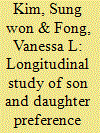| Srl | Item |
| 1 |
ID:
167865


|
|
|
|
|
| Summary/Abstract |
A perennial critique of international relations is that the field focuses disproportionately on the United States and Europe and contains a gender bias in terms of ignoring issues of particular concern to women. The field is also infamous for how difficult it is for female scholars to publish and have their publications cited. This study evaluates these claims of bias in the area of undergraduate international relations teaching by analyzing an original dataset of 48 introduction to international relations syllabi from ten countries. The study analyzes the authors of required readings and the theories and empirical topics taught, and finds that the geographic and gender biases are both firmly in place. The first finding is that courses assign readings predominantly from US-resident, US-trained, male authors, even those courses taught outside the United States and those taught by female faculty. A second finding is that assigned readings focus overwhelmingly on the United States more than any other country or region, and only 1 percent of readings focus specifically on gender-related issues.
|
|
|
|
|
|
|
|
|
|
|
|
|
|
|
|
| 2 |
ID:
130432


|
|
|
|
|
| Publication |
2014.
|
| Summary/Abstract |
In this mixed-method longitudinal study, we examined the continuity of son preference and daughter preference from adolescence to adulthood, and investigated how perceptions of gender equity shape these preferences among 2,273 youth born in Dalian between 1979 and 1986 under the one-child policy. The majority expressed no preference in adolescence or adulthood. Results from multivariate analysis and the narratives of 23 participants revealed that child gender preferences in adolescence were predictive of later preferences in adulthood. Furthermore, in adolescence, child gender preferences were associated with individuals' beliefs about gender as manifested in their attitudes towards women and employment, as well as their perceptions of parental and social gender biases against women. Our findings suggest that increasingly gender-egalitarian attitudes in urban China shape the child gender preferences of singleton youth in adolescence, and are likely to contribute to their later childbearing decisions, with important social and demographic implications.
|
|
|
|
|
|
|
|
|
|
|
|
|
|
|
|